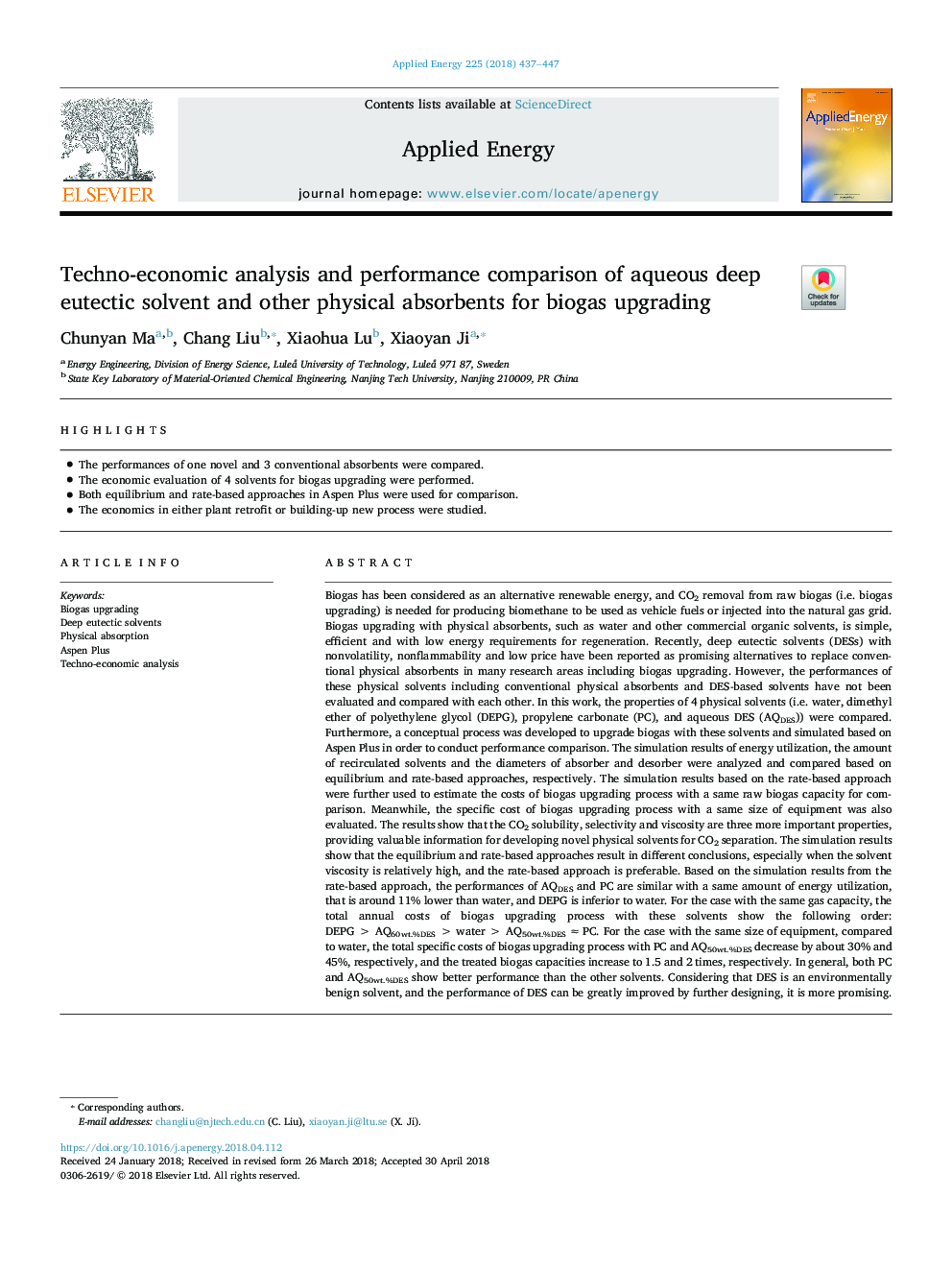| کد مقاله | کد نشریه | سال انتشار | مقاله انگلیسی | نسخه تمام متن |
|---|---|---|---|---|
| 6679930 | 1428065 | 2018 | 11 صفحه PDF | دانلود رایگان |
عنوان انگلیسی مقاله ISI
Techno-economic analysis and performance comparison of aqueous deep eutectic solvent and other physical absorbents for biogas upgrading
ترجمه فارسی عنوان
تجزیه و تحلیل تکنولوژیکی و مقایسه عملکرد سازنده حلال آب اکوستیک و سایر جاذب های فیزیکی برای ارتقای بیوگاز
دانلود مقاله + سفارش ترجمه
دانلود مقاله ISI انگلیسی
رایگان برای ایرانیان
کلمات کلیدی
ارتقاء بیوگاز، حلال های عمیق یوتکتیک، جذب فیزیکی، آسپن پلاس، تجزیه و تحلیل تکنولوژیکی و اقتصادی،
موضوعات مرتبط
مهندسی و علوم پایه
مهندسی انرژی
مهندسی انرژی و فناوری های برق
چکیده انگلیسی
Biogas has been considered as an alternative renewable energy, and CO2 removal from raw biogas (i.e. biogas upgrading) is needed for producing biomethane to be used as vehicle fuels or injected into the natural gas grid. Biogas upgrading with physical absorbents, such as water and other commercial organic solvents, is simple, efficient and with low energy requirements for regeneration. Recently, deep eutectic solvents (DESs) with nonvolatility, nonflammability and low price have been reported as promising alternatives to replace conventional physical absorbents in many research areas including biogas upgrading. However, the performances of these physical solvents including conventional physical absorbents and DES-based solvents have not been evaluated and compared with each other. In this work, the properties of 4 physical solvents (i.e. water, dimethyl ether of polyethylene glycol (DEPG), propylene carbonate (PC), and aqueous DES (AQDES)) were compared. Furthermore, a conceptual process was developed to upgrade biogas with these solvents and simulated based on Aspen Plus in order to conduct performance comparison. The simulation results of energy utilization, the amount of recirculated solvents and the diameters of absorber and desorber were analyzed and compared based on equilibrium and rate-based approaches, respectively. The simulation results based on the rate-based approach were further used to estimate the costs of biogas upgrading process with a same raw biogas capacity for comparison. Meanwhile, the specific cost of biogas upgrading process with a same size of equipment was also evaluated. The results show that the CO2 solubility, selectivity and viscosity are three more important properties, providing valuable information for developing novel physical solvents for CO2 separation. The simulation results show that the equilibrium and rate-based approaches result in different conclusions, especially when the solvent viscosity is relatively high, and the rate-based approach is preferable. Based on the simulation results from the rate-based approach, the performances of AQDES and PC are similar with a same amount of energy utilization, that is around 11% lower than water, and DEPG is inferior to water. For the case with the same gas capacity, the total annual costs of biogas upgrading process with these solvents show the following order: DEPGâ¯>â¯AQ60wt.%DESâ¯>â¯waterâ¯>â¯AQ50wt.%DESâ¯ââ¯PC. For the case with the same size of equipment, compared to water, the total specific costs of biogas upgrading process with PC and AQ50wt.%DES decrease by about 30% and 45%, respectively, and the treated biogas capacities increase to 1.5 and 2 times, respectively. In general, both PC and AQ50wt.%DES show better performance than the other solvents. Considering that DES is an environmentally benign solvent, and the performance of DES can be greatly improved by further designing, it is more promising.
ناشر
Database: Elsevier - ScienceDirect (ساینس دایرکت)
Journal: Applied Energy - Volume 225, 1 September 2018, Pages 437-447
Journal: Applied Energy - Volume 225, 1 September 2018, Pages 437-447
نویسندگان
Chunyan Ma, Chang Liu, Xiaohua Lu, Xiaoyan Ji,
